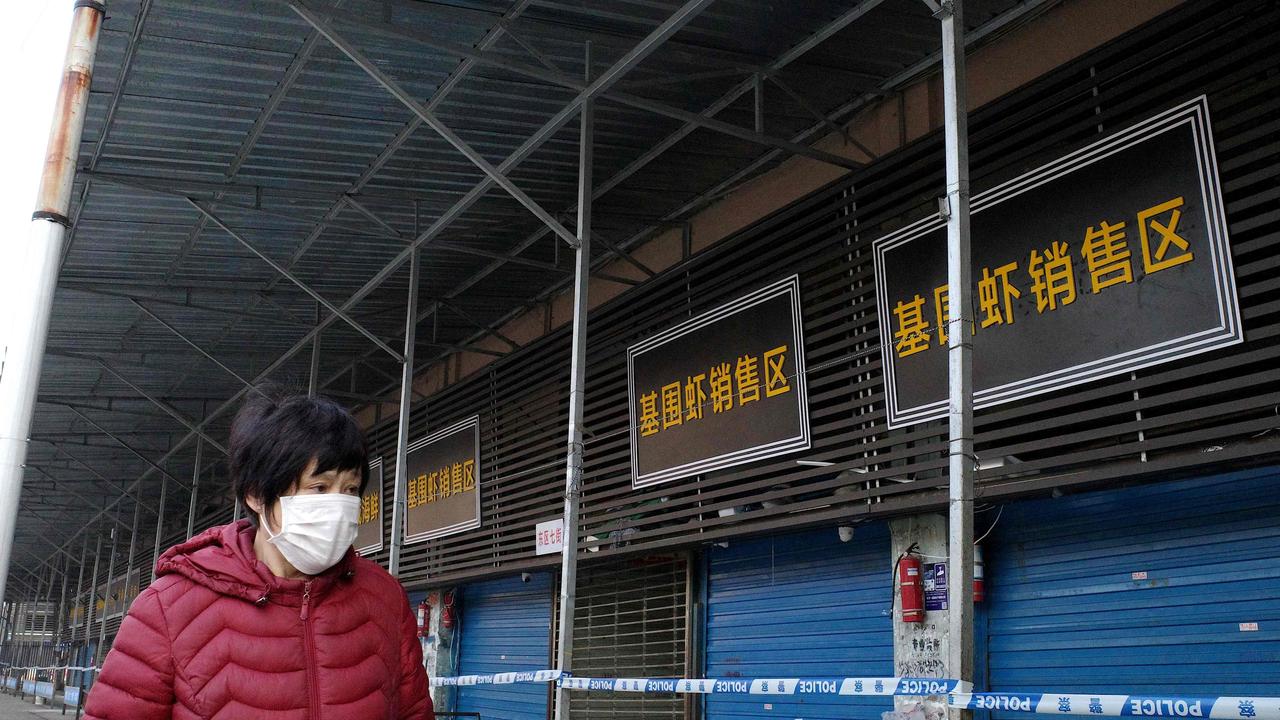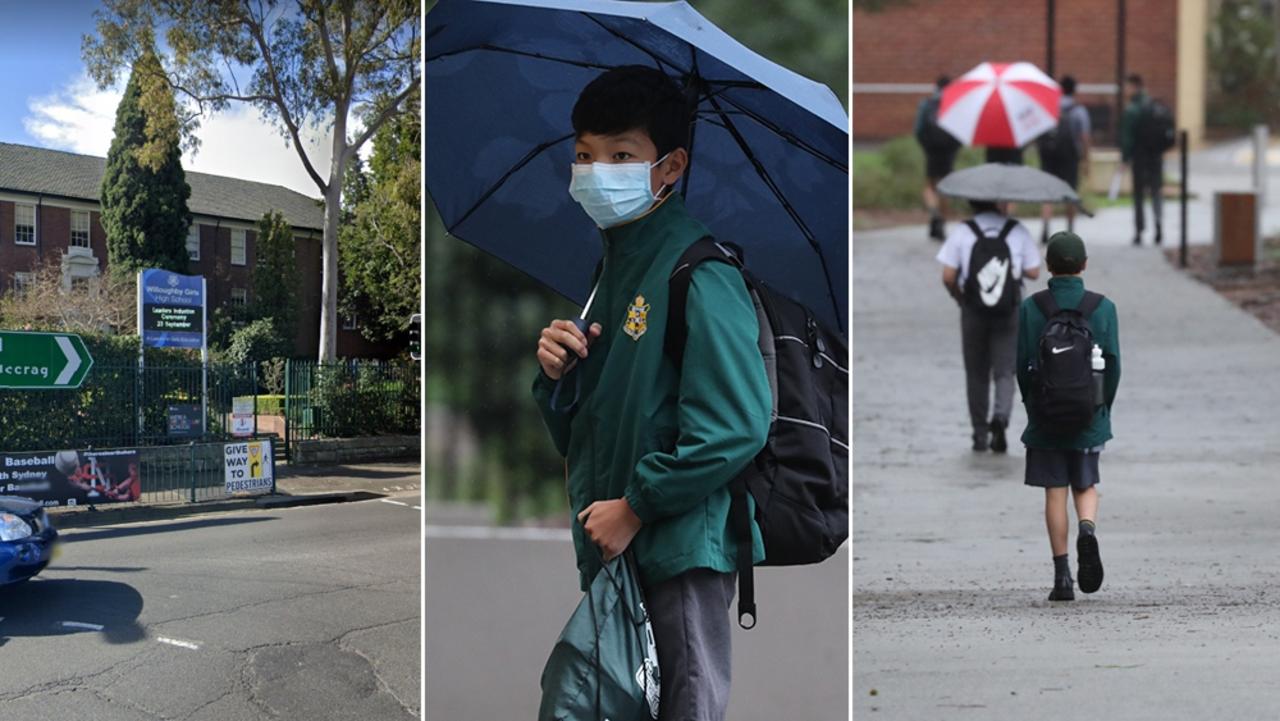Coronavirus in Australia: How COVID-19 spread to hot spots across Sydney
A Sydney doctor is calling for people in NSW’s major population centres to be quarantined as the number of coronavirus cases increases.

A Sydney doctor is calling for people in NSW’s major population centres to be quarantined as the number of coronavirus cases increases.
Dr Cathie Hull, who works in the emergency department at Ryde Hospital where a doctor has already tested positive to COVID-19 after returning from Iran, said she had spent two weeks in self-isolation.
“I didn’t see my daughter and my granddaughter,” Dr Hull told the ABC.
“I can see the importance of the isolation process and how it can buy time for us to get the health system ready to handle more cases. I think if everybody did it for two weeks, we might be in a better position to move on with fewer cases and to cope with the demands on the health system.”
RELATED: Follow the latest coronavirus updates and death toll
RELATED: Your five big questions about coronavirus answered
It comes as NSW Health confirmed eight new cases of coronavirus, bringing the total to 55 in the worst-hit state in Australia and 100 nationally.
The new cases include a woman in her 20s, a known contact of a previously confirmed case at Ryde Hospital, a woman in her 40s who recently returned from South Korea, and a male in his 20s, a Victorian resident who recently returned from Hong Kong.
Also testing positive are a woman in her 80s who transferred from Dorothy Henderson Lodge Aged Care Facility to Ryde Hospital, and a woman in her 40s who is related to a deceased resident from Dorothy Henderson Lodge.
NSW Health is also following up three other cases – a woman in her 30s, a male in his 70s and a woman in her 40s, to identify the source of their infection and trace their close contacts.
“Following confirmation of three cases at St Patrick’s Marist College, Dundas and Willoughby Girls High School, NSW Health is contacting close contacts of the three children to advise them to self-isolate and seek medical advice if they become unwell,” the deparment said.
In Sydney, people have tested positive for the virus everywhere from the Northern Beaches right down to Cronulla, affecting schools, hospitals and an aged care facility.
At least 10 hot spots have been identified across the city, including at the Sydney Airport, Epping, and Macquarie Park, where two of Australia’s three virus-related deaths have occurred.
“This is likely to be the new norm,” Health Minister Brad Hazzard said on Monday afternoon about schools being forced to close.
“We have established now a clear orthodoxy. If a child or a staff member or any other person within a school is found to have the COVID-19 virus, then effectively a breather will be taken and a day out will be the immediate requirement.”
NSW chief economist Stephen Walters says a state recession isn’t inevitable but is currently a risk.
Here’s how the outbreak has unfolded so far.
FIRST CASES CONFIRMED
The state’s first three cases were confirmed in Sydney on January 25, about three weeks after the virus was detected at a seafood market in Wuhan, China.
All three cases involved men, aged in their 30s to 50s, who developed symptoms after travelling to China. Two had travelled to Wuhan directly, while the third had been in contact with an infected person in China.
A fourth case involving a woman who had travelled to Wuhan was then confirmed two days later.

STATE GOES ON HIGH ALERT
By Valentine’s Day, the state was on high alert for any signs of an outbreak.
Staff at Sydney Airport began screening thousands of travellers for symptoms, while hundreds of people were being swabbed and cleared.
Myths about the virus started circulating on social media, prompting a warning from NSW Health, while anyone who had recently travelled to hot spots overseas, including Iran, Italy, Japan and South Korea, was urged to monitor their health.
But it wasn’t until March 1 that the state’s next two cases were confirmed.
They involved two people who had recently travelled to Iran, where cases were beginning to skyrocket.
READ MORE: ‘Two thirds of world could be infected’
READ MORE: How coronavirus compares to Spanish flu

BIG SPIKE IN CASES
The next seven days then became a horror week for the state, with the first virus-related deaths confirmed, the first school closure and the number of cases jumping from six to 40.
On March 2, three cases were confirmed, including a health care worker who hadn’t travelled to any high-risk countries.
The next day six more people tested positive, including travellers from Iran, South Korea and Japan.
Then on March 4, NSW Health confirmed an aged care resident at the Dorothy Henderson Lodge at Macquarie Park had died of the disease – the state’s first death and country’s second.
The woman, who was in her 90s, had been looked after by a nurse who had also tested positive, and two more residents were infected, NSW chief health officer Dr Kerry Chant said.

Health authorities immediately began scrambling to trace the source of the virus, as none had recently travelled overseas.
Staff and a group of 17 children from a nearby child care centre also had to be tested after visiting the facility, though none tested positive.
The aged care facility has now become the site of one of the biggest virus clusters in Sydney, with more staff and close contacts infected and a second death confirmed on Sunday.
FIRST SCHOOL CLOSED
The state’s first school closure came on March 5, when Epping Boys High School announced a Year 11 student had tested positive for the virus.
The school closed for one day on Friday, with staff and students advised to stay home and self-isolate over the weekend.
But close contacts, including anyone who spent between 15 minutes and two hours with the student, with have now been asked to self-isolate for 14 days.


There were also fears for about 77 people who attended a medical conference in Liverpool on February 18, after two attendees – a doctor from Ryde Hospital and another from Liverpool Hospital – later tested positive.
But NSW Health confirmed on Monday it had successfully traced all delegates and no further cases were found.
“This is a bit like a police investigation in a sense, trying to track who is coming into contact with who and what possible associations there may have been,” NSW Health Minister Brad Hazzard said.

TOLL NOW STANDS AT 55
Now, 44 days after the first infection was detected, the total number of cases confirmed in New South Wales now stands at 55.
Among the latest to become infected include a man in his 70s who visited St Vincent’s Hospital in Darlinghurst on Friday, a Hunter man who recently travelled to Italy, and two students from St Patrick’s Marist College in Dundas and Willoughby Girls High School.
But Dr Chant said none of the recent cases were “random”.
“The vast majority of new cases can be traced to existing cases,” she said on Monday.
“This is reassuring as it means we are tracking how COVID-19 has been transmitted and in general we are not seeing random cases occur in the community at large.”
More than 111,000 people have now been infected with the virus across the world, with 100 in Australia, according to the latest data from Johns Hopkins University.



